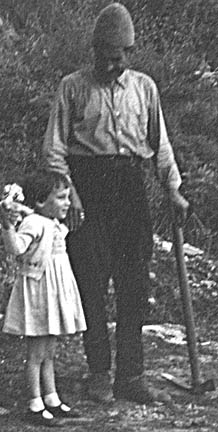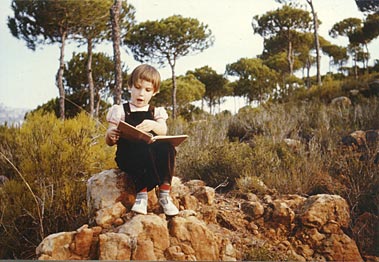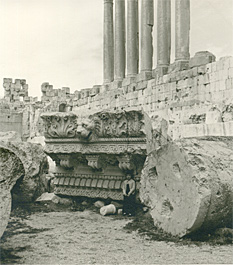The name of presscom arose from the eight figure MSDOS
file name restrictions and is now short for presscommune. The
domain name was reserved in 1998 before its editor
discovered that there were a number of 'presscom' sites
in addition to the US and UK domain. At least three of
these sites appear to have similar aims, that
of providing resource documentary and/or historical material.
The site has opened with the collected works of
JAMES HALLIWELL (later known as Halliwell-Phillipps),
partly because he is an ancestor of the editor of the site,
and was therefore a known quantity, but otherwise because
he was an enthusiastic gatherer and publisher of
popular English written and oral tradition. In some cases the resource base may stray to publications/
manuscripts which are not strictly within the declared ambit,
but it is hoped the material will add to the stock already
on-line and be of help to someone somewhere (in a non-destructive sense).
It had been intended to provide links to other similar material on the internet where it provided a translation of that on this site, but the ease and comprehensive search engines now available (google, alta-vista, yahoo, to name but a few) have eliminated the need for this.
Remarks on style
Acknowledgements
The presscom logo was designed by the highly intelligent,
witty, prescient and beloved H.Aspersa, whose ancestors inhabited
these isles long before even the Celts arrived (although it is claimed—obviously by someone who witnessed it—that the species was brought over by man 200,000 years ago) and who contributed
worldwide to the material foundations of modern civilisation.
For this alone they should be respected, in addition to their artistic
talents. Honour the little animals: a piece of lettuce a day, or even a special corner with spider-plant (so long as the little dears are trained—much like little children or pets—to know it is there), keeps
H.Aspersa and his-her fellow shelled species away from your plants and
stops you from becoming an earth-terrorist !
The illustrations have been processed by
Adobe's Photoshop and Ulead's PhotoImpact programs. Arachnophilia
v.4 is used for most of the html writing. Using basic html has its limitations compared to css but it allows the pages to be read by most browsers, old as well as recent versions. Some css script is being introduced in late 2009 in respect of image links.
Contact
A word of warning!
11th November, 2011
Visual style of pages. Attempts were, & still are made to approximate the style of the title pages of the republished material so that readers could get an idea of the typographical traditions. However, more widespread use of broadband and faster downloading speeds mean that online access to reproductions of the original publications is increasing. Presscom is still adhering to its original initiative as many readers outside the US and Europe depend on expensive and/or slow connections to the internet so will not be able to access more expensive online book libraries now available. In addition, downloading very large files for original page jpgs also has a related high carbon energy rating so by keeping to text versions this enables faster searching as well as more environmentally friendly access to the literature.
Footnotes are placed just beneath the text to which they refer. Footnotes are usually relegated in the printed press to the end of a chapter or book, on the internet they are linked to their numerical or alphabetical reference. But as footnotes can be very important information addenda the tradition of pinning them near to the relevant text will be kept for the moment.
The pagination of the original text is referenced in bold italics between two hash marks. In a few cases simply the two strokes '/ /' denote a change of page numbers. Where the brackets are [ ] this indicates that the page number has not been printed on the relevant page but is assumed from the sequence to be the number shown.
Illustrations. The illustrations reproduced on the site are mainly black-white line and not photographs. Since 2011 transparent gif or png mode is slowly being eliminated with the use of Adobe Photoshop CS5 as there is no downloading time advantage with transparency mode with the use of this excellent program. Some obvious extra pixillation caused by the scanning process has been eliminated. This does not apply to very early printed material.
Illustrations-print size. The earlier republished illustrations are not always the original print size. It had been hoped after 2006 to reproduce pictures close to the original size. However, as this would be too heavy for small mobile devices to download, the picture sizes may now vary. For published material with many pictures they will be saved at 200pixel width or depth, with links to enlargements. As a general rule the illustrations are now scanned at 1200dpi, reduced to 84.5dpi for the page examples (this shows up at the printed size on a 1024x768 display screen) and 120dpi for illustrations on the page, unless reduced to 200px. Enlargements vary from 200dpi to 400dpi, dependent upon how detailed they are. Varying from this 'rule' will be shown in a comment line at the start of the text. The printed size of the original published illustration can now be found in the 'alt' line of the source text or the enlargement's html alt-text.
In respect of photographs, like in any publishing enterprise some have been modified legitimately for contrast, brightness or exposure rating. No changes to the content of any illustration has occurred.
Web editorial notes are now in a different font colour, although where this interferes with the reading of the text, particularly with poetry, a comment may be placed in the source text.
The index/home page was based on a template in Lotus SmartSuite's Freelance Graphics program.
The contact email will change irregularly to try to prevent spammers. This is on the contact.html page.
This site contains no scripts outside those reducing the page size, no cookies, no hidden tracking, etc. It is as 'web organic' as possible. However, the publisher of Presscom is not in a position to prevent hostile individuals from hacking information related to the site (part of the statistics gathered to assess site access as part of a hosting service), however much the 'enemy out there' is behaving unlawfully and anti-socially. As has been advised before, it is strongly suggested that visitors to the site —and indeed any web site— have a good firewall installed, particularly one that blocks attacks on the ports. Given that the content of this site may raise a few hackles (those supportive of the Earl of Oxford as Shakespeare, those with undemocratic political views, those conducting a personal vendetta, for example) there is a remote likelihood that the network system is 'eavesdropped' and precautions are to the advantage of all straightforward web users.
|
CENSORED! |

(as the mediterranean weather moves north)

Enjoying a little world-play now and again.

